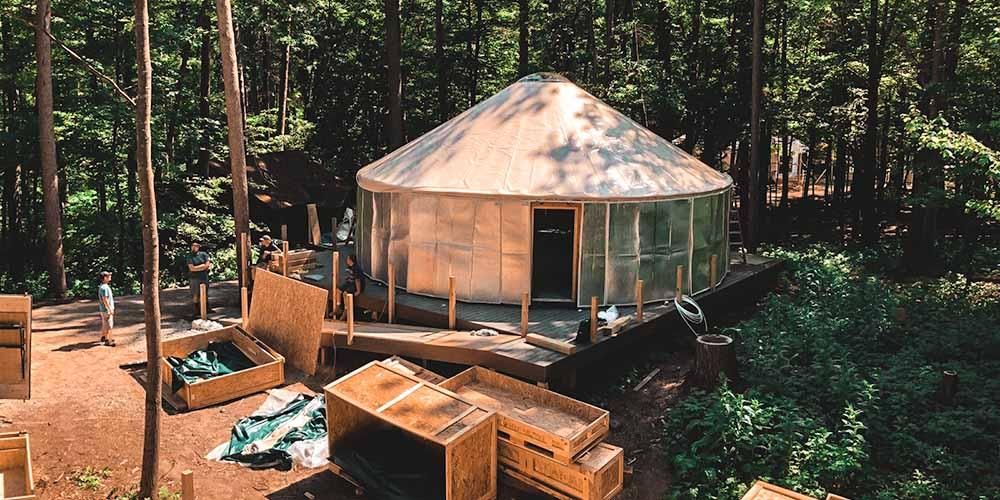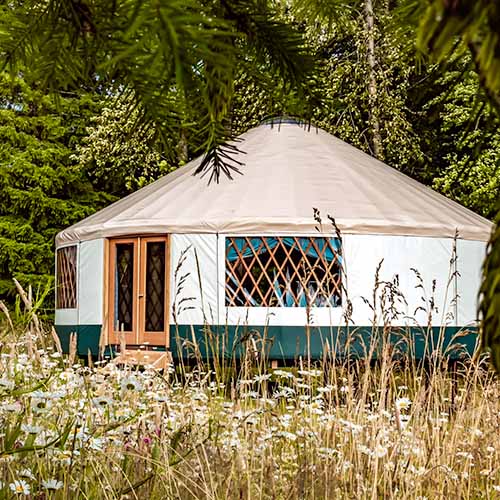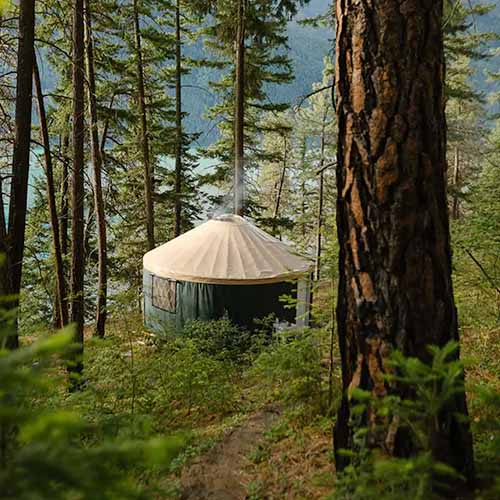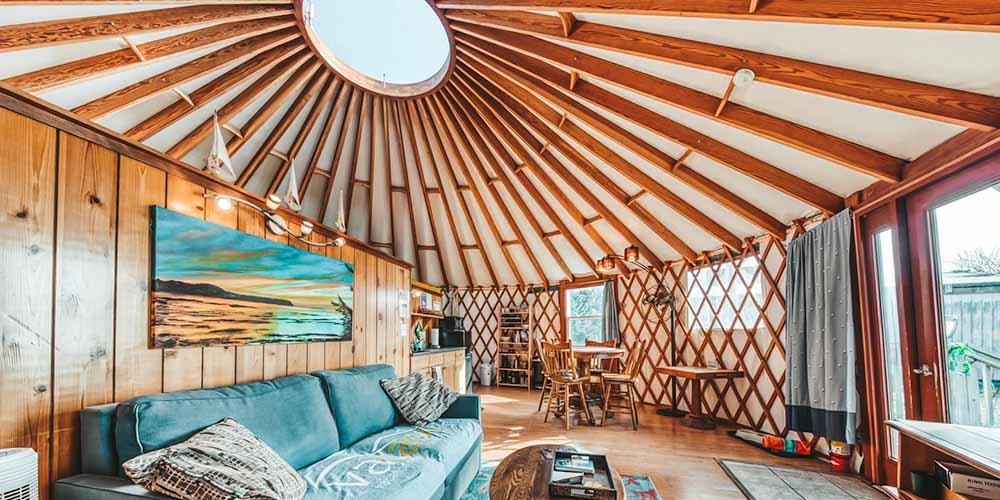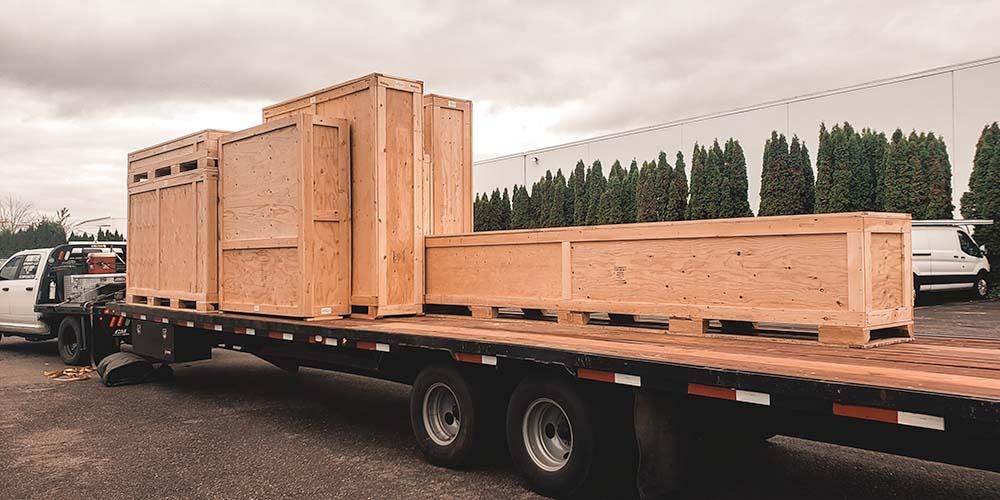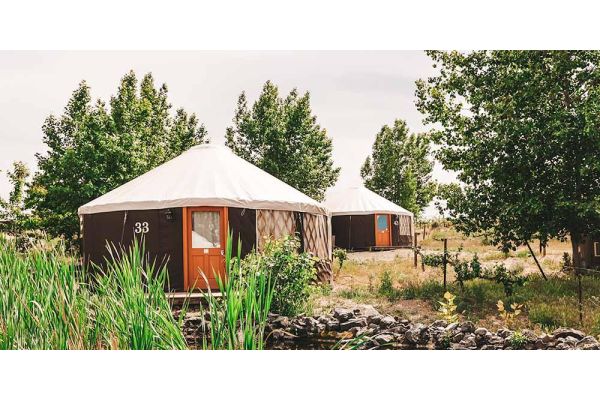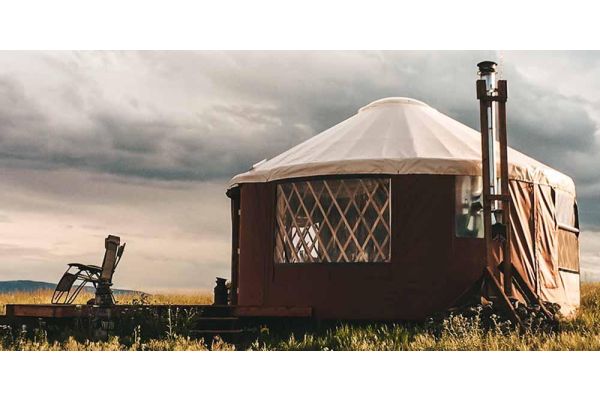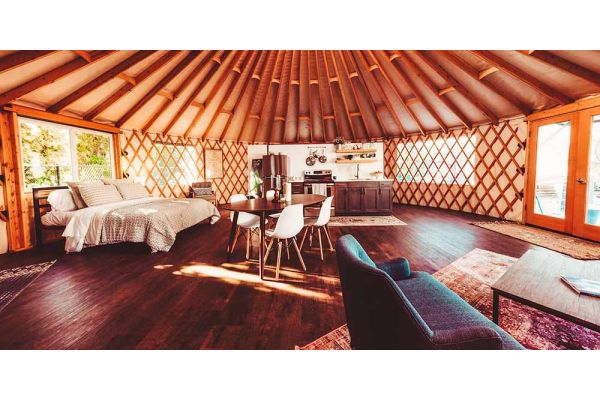Introducing, The True Cost Of Building A Yurt
You’ve experienced the excitement behind living in the round, read about the serene adventure, and seen the photos. Now, you want an introduction to the price, planning, and construction of a yurt. Rainier Outdoor is here to be your tour guide and specialist to all things yurts.
Our team of yurt connoisseurs came together to bring you The True Cost of Building a Yurt Series. Welcome to part one, The True Cost of Building a Yurt: Introduction, where we’ll discuss shipping, permits, platforms, floor plans, energy codes, solar, and pricing.
Part two of our series, The True Cost of Building a Yurt: Package, will investigate three Rainier Outdoor Yurt customers that have volunteered to share their stories about raising a yurt for full-time living, vacation homes, and glamping sites.
Volume three of our series, The True Cost of Building a Yurt: Platform, will identify the ideal platform plans for your yurt. In addition, you’ll receive estimated labor and costs associated with each platform example.
In part four of our series, The True Cost of Building a Yurt: Shipping, our team will provide everything you need to know about shipping and will call through Rainier Outdoor. We will discuss your options and share estimated freight costs from three recent shipments in various yurt sizes.
Where Can You Raise a Yurt?
Yurts are known to provide the most versatile and sustainable long-term living environment. They seamlessly blend with nature, withstand weather extremes, and are customizable to comfortably fit any landscape.
Undoubtedly, the most common and difficult interference with yurt construction is the codes and regulations. Yurt codes and regulations can be a complex and sometimes challenging process. The ability to freely build a yurt for full-time living will depend on the state or county rules about yurt permits.
The first step is to check with your local Building Department to identify the codes and regulations that relate to yurt construction in your area. The local building department will provide information for the minimum required snow load, seismic ratings, wind speed, and fire safety in your area. We recommend bringing your Rainier Outdoor information yurt packet or showing them RainierOutdoor.com to help them better understand the circumstances of your future home. To learn more about yurt codes and regulations, visit our blog here.
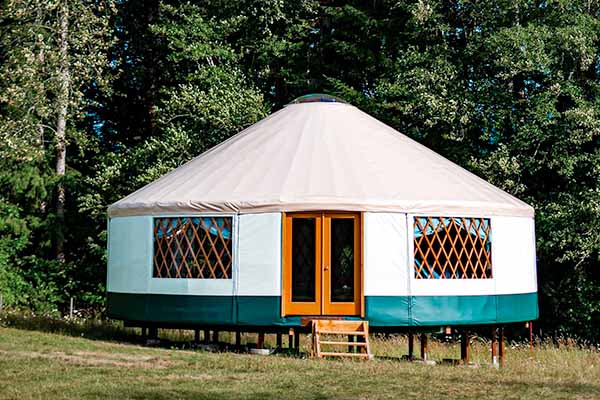

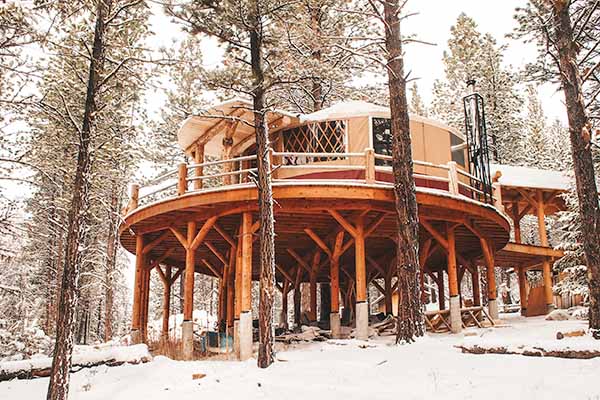

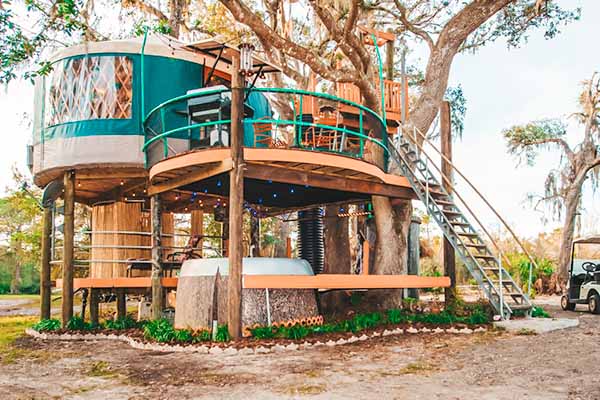

Yurt Insulation and Energy Codes
A large portion of the permitting decisions made will be about yurt insulation and energy codes. In most cases, yurts rely on reflective insulation which reflects heat back into the space while your heat source is operating. Reflective insulation does not contain the heated air once the heat source is shut off; however, reflective insulation is significantly more effective than conductive insulation. You can build conductive insulation into your yurt with additional framing, but it will require covering the lattice walls and roof, which would defeat the purpose of a yurt. Differentiating reflective and conductive insulation can be confusing, so our team included this visual to better separate the two.
| Reflective Insulation | Conductive Insulation |
|---|---|
|
Its highly reflective material reflects heat radiation rather than absorbing it. It reflects radiant heat away from the primary surface. |
It relies on materials that slow down heat transfer between two surfaces with different temperatures, resisting the transfer of heat. |
| Enhances its reflective properties by preventing direct contact with the heat source. | Prevents heat from transferring through the solid materials of a yurt like the lattice, walls, etc. |
| Reduces radiant heat loss by 97% | Reduces radiant heat loss by 5-10% |
Your final option is to request for exemption to the code if you plan to incorporate a renewable heat source. Some examples include pellet stoves fueled by wood pellets made from sawdust or electrical heaters that run on solar, wind, or water power. You may encounter flexibility if the yurt is only heated seasonally or intermittently used as a rental property.
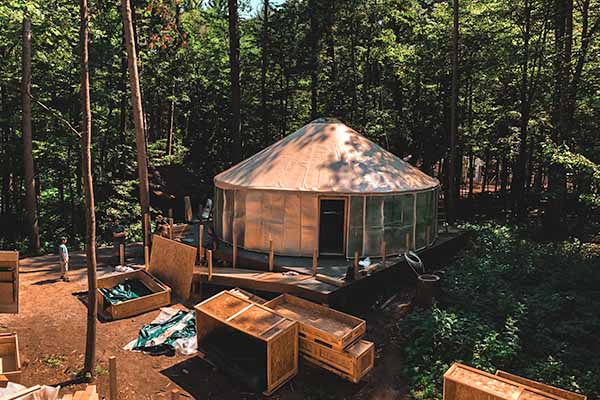

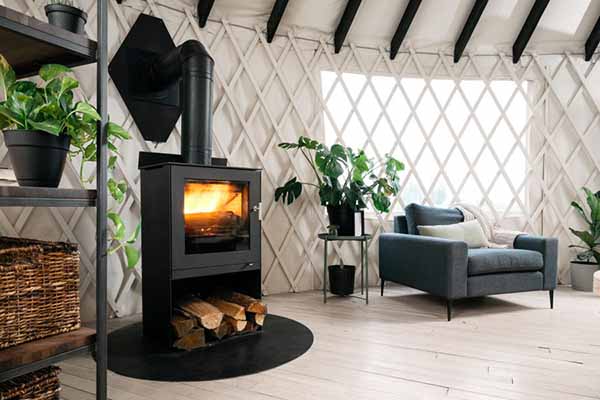

Your Guide to Building a Yurt Platform
A more permanent yurt installation, like a full-time living structure, rental property, lodge, or wellness center will require a sturdy platform that is built to last. The yurt platform lays the groundwork for the longevity and reliability of your new structure. Rainier Outdoor offers engineered platform plans that you’ll receive once you make your deposit. I highly recommend that you work from these plans and, depending on your slope and soil conditions, adjust as needed.
It is important to note that we refer to our yurt diameters in whole numbers, but we round the actual diameter. For example, the 24-foot Rainier Yurt is 24’-4 7/8” in diameter, and the 30’ is 30’ – 6”. It’s important to pay close attention to your detailed yurt plans.
Please be sure to build your platform with the integrity and structural design we have in our plans so that your yurt will be as stable as possible. Some people choose to use Sonotubes, while others go with pier blocks for support. Depending on your location, you may want pressure-treated lumber or composite deck materials like Timbertech or Trex. Nonetheless, Rainier Outdoor will provide the plans to best fit your yurt size and you’ll determine the optimal materials. If you become stuck on the materials required to build your yurt, check out our blog, The True Cost of Building a Yurt: Platform.
When you purchase your yurt, you’ll have the option to choose between purchasing Structurally Insulated Panels (SIPS) or building your deck. The SIPS Deck is a popular choice for yurt owners because it provides an extremely strong building system that requires little to no additional support. SIPS Decks make the platform framing process quicker and provide an air-tight, well-insulated yurt platform. To learn more about SIPS Decks, visit this link.
Choosing A Yurt Floor Plan
In our opinion, the most exciting part about your yurt-raising adventure is crafting the interior floor plan and design of your new home! Like a conventional home, the cost of designing the interior of your yurt will vary based on your style and floor plan complexity. Choose from over 100 yurt floor plans for all sizes and configurations at no extra charge. Our specific yurt floor plans can help you determine the location of your kitchen, bathroom, loft, bedrooms, and living space in the yurt. Explore Yurt Floor Plans here.
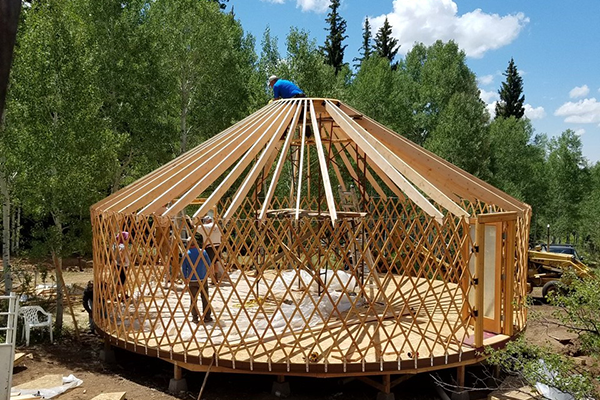

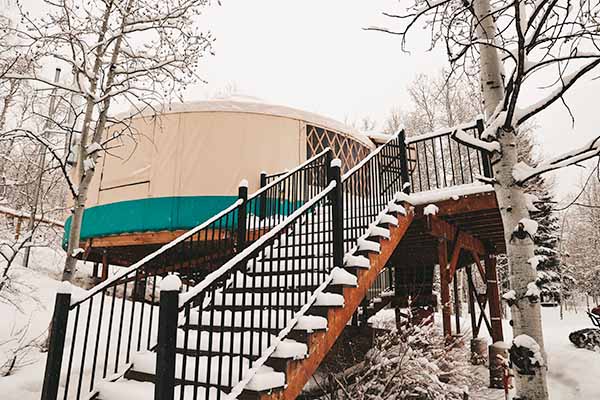

What To Expect in this Series
In the next three sections of this series, we will interview three customers who have purchased and raised their yurts. These volunteers have offered to share their experiences with yurt selections, platform builds, shipping, and all costs associated with raising a yurt. Each passionate yurt owner offers a unique insight on building an oasis within a budget all while suiting their individual needs and local climate.
Another excellent resource is the DoItYurtself.com project. Check out their website for more information about yurt construction.
We hope you enjoyed this article and found it to be useful. Please feel free to drop a comment below with any questions you may have.
Enjoy the journey!

